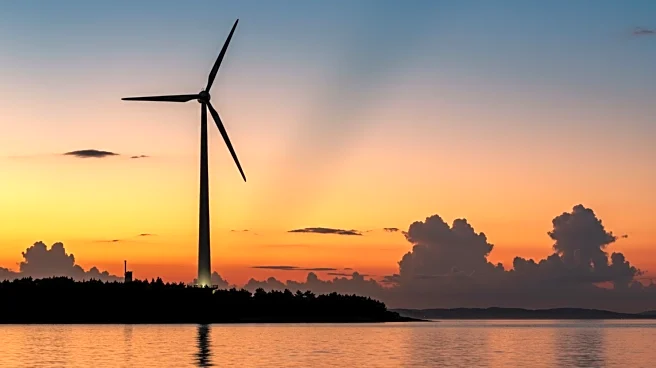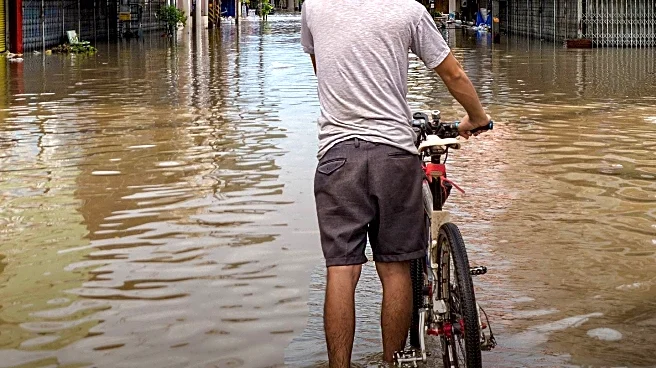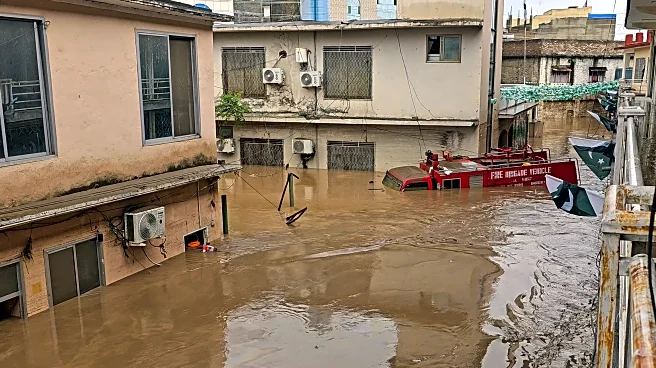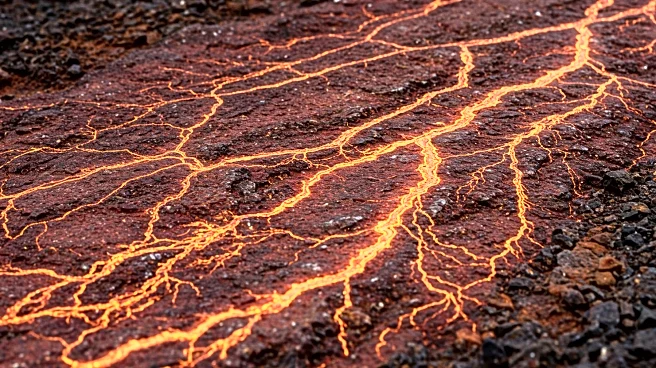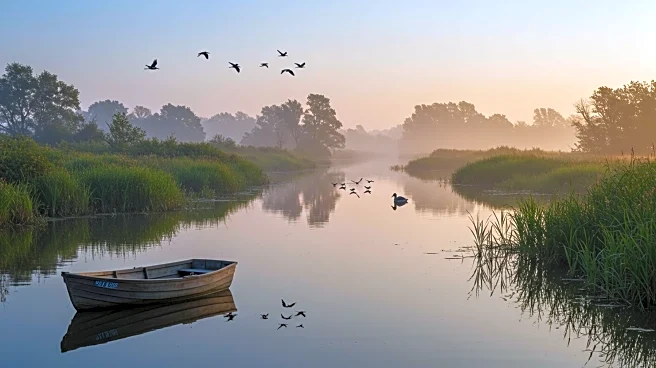Rapid Read • 8 min read
Namal Lake in Mianwali is facing significant ecological degradation due to the construction of illegal mini dams by farmers in its catchment areas. Originally formed by the Namal Dam built in 1913, the lake has seen its surface area shrink from 5.5 sq km to 2.2 sq km. This reduction is attributed to decreased inflow of fresh water from the catchment areas and siltation. The Punjab Protection Agency has identified these mini dams and siltation as primary causes of the lake's degradation. The Namal Lake Restoration and Management Plan 2022-2027 has proposed measures such as silt removal, afforestation, and pollution control to restore the lake. The 'Save Namal Lake' campaign, initiated by local residents and overseas Pakistanis, is urging the Punjab Government to implement these restoration plans to protect the lake and the livelihoods dependent on it.
AD
The degradation of Namal Lake poses a threat to local agriculture and the livelihoods of residents in Mianwali and surrounding areas. The lake is a vital source of drinking water and irrigation, and its decline could lead to significant economic and social impacts. Additionally, the lake has potential as a tourist destination, which could provide economic benefits to the region. The loss of biodiversity and the lake's status as a Ramsar Convention candidate highlight the environmental significance of this issue. The campaign to save Namal Lake underscores the need for coordinated conservation efforts to prevent further ecological damage and support sustainable development in the area.
The 'Save Namal Lake' campaign is actively seeking intervention from government authorities and international environmental agencies to secure funds and implement restoration measures. The Punjab Government is being urged to take immediate action to prevent further degradation. The Deputy Commissioner of Mianwali has assured campaigners of pursuing the matter, indicating potential government involvement in the restoration efforts. The success of these initiatives could lead to improved water management, conservation of biodiversity, and enhanced tourism opportunities, benefiting the local economy and environment.
The situation at Namal Lake highlights broader issues of water management and environmental conservation in Pakistan. The construction of illegal dams reflects challenges in regulating water resources and balancing agricultural needs with ecological preservation. The campaign to save the lake also illustrates the role of community activism in driving environmental change. Long-term solutions will require integrated approaches that address both ecological and socio-economic factors, potentially serving as a model for other regions facing similar challenges.
AD
More Stories You Might Enjoy



